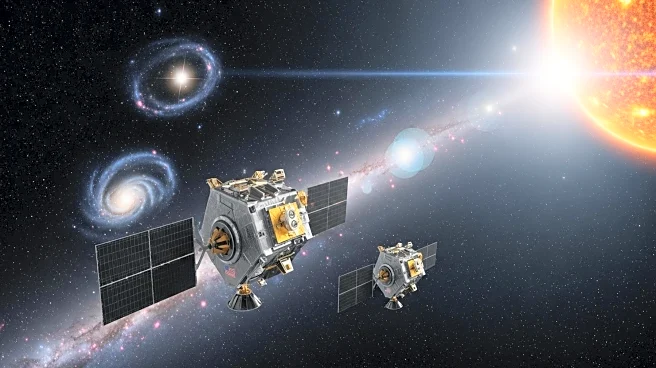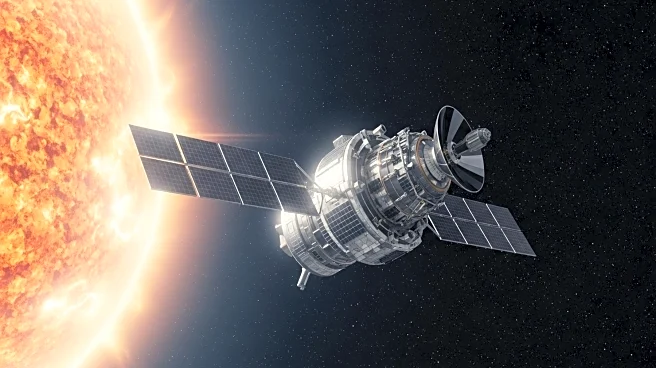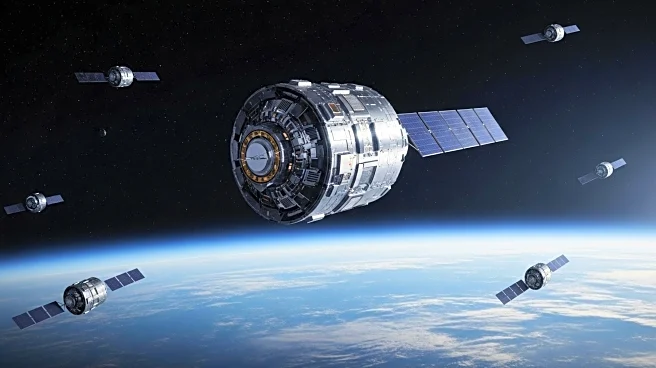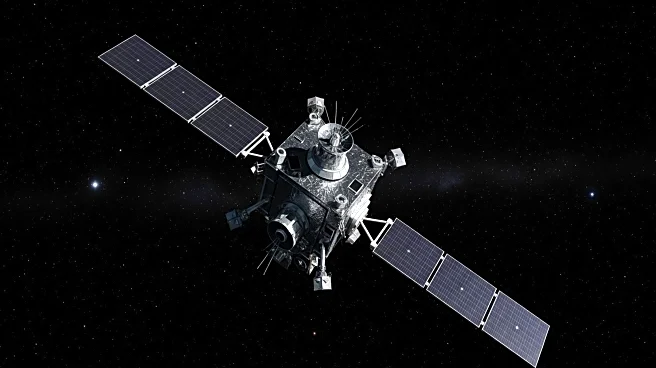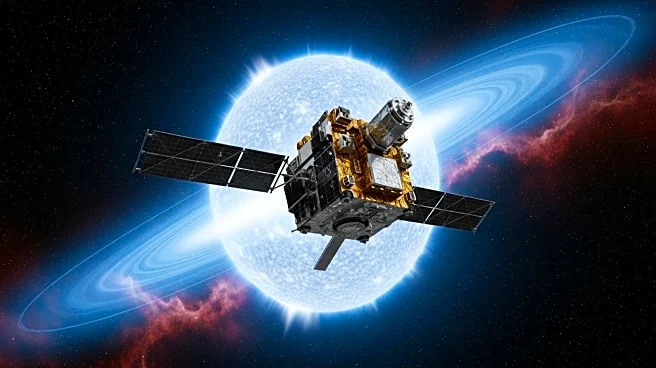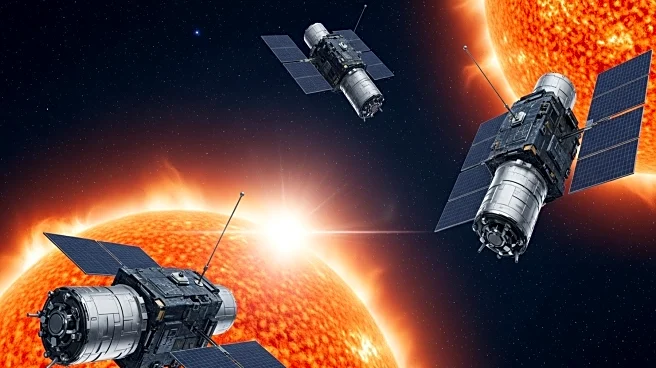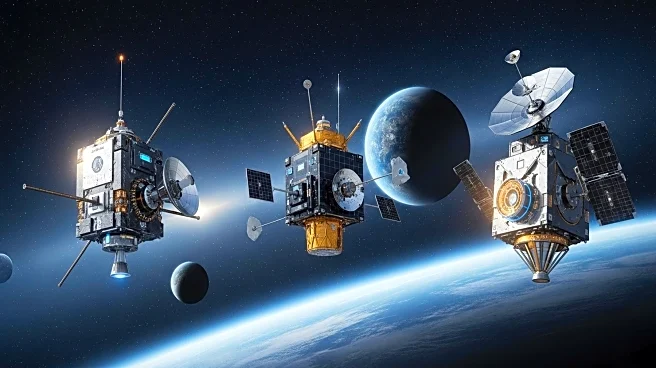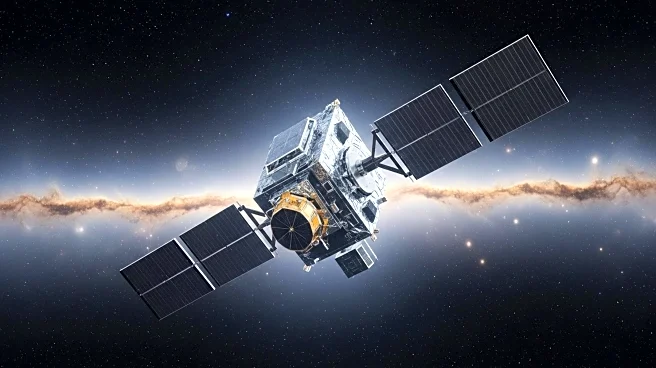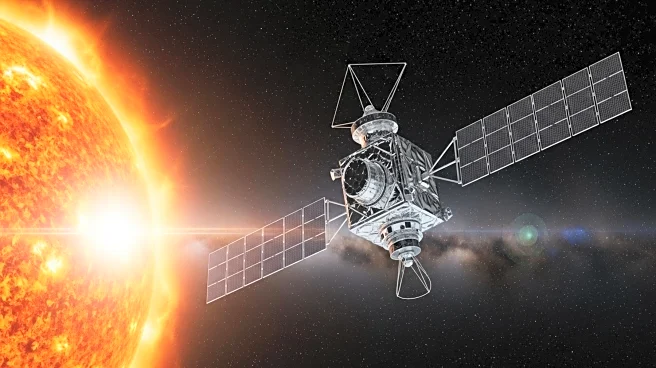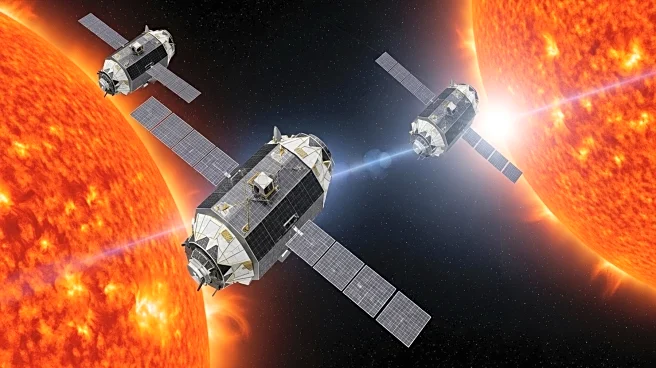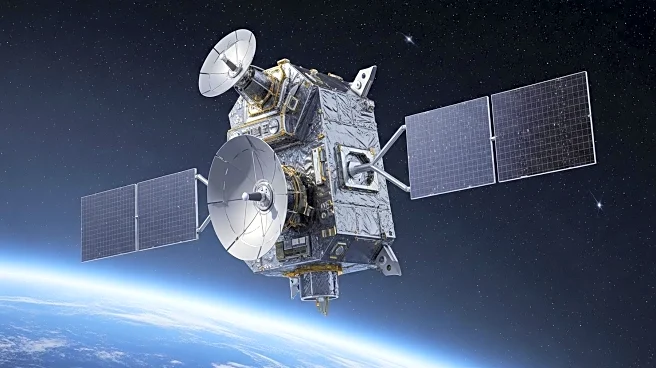What is the story about?
What's Happening?
NASA is preparing to launch a series of space probes as part of the Interstellar Mapping and Acceleration Probe (IMAP) program to study the heliosphere. The heliosphere is an invisible shield composed of charged particles from the sun, creating a protective bubble around the solar system. The mission involves three spacecraft launched together to track solar activity from a location called 'L1' in deep space, approximately 1 million miles from Earth. John Gagosian, director of NASA's Joint Agency Satellite Division, explained that the mission aims to understand how the heliosphere interacts with the interstellar medium and how it is affected by solar activity. The National Oceanic and Atmospheric Administration's new space weather satellite will provide real-time data with continuous monitoring.
Why It's Important?
The study of the heliosphere is crucial for understanding solar activity and its effects on Earth. By measuring the energy and velocity of charged particles streaming from the sun, scientists can gain insights into potential impacts on satellites and technology. This research could provide a 30-minute warning to protect these assets from solar storms. The mission's findings may enhance our ability to predict and mitigate the effects of solar activity on Earth's technological infrastructure, benefiting industries reliant on satellite communications and navigation systems.
What's Next?
The launch of the IMAP program will enable NASA to gather data on the heliosphere's interaction with solar storms. The continuous monitoring by NOAA's satellite will help in developing strategies to protect satellites and technology from solar activity. The insights gained from this mission could lead to advancements in space weather forecasting and improved safety measures for technological systems on Earth.
AI Generated Content
Do you find this article useful?
